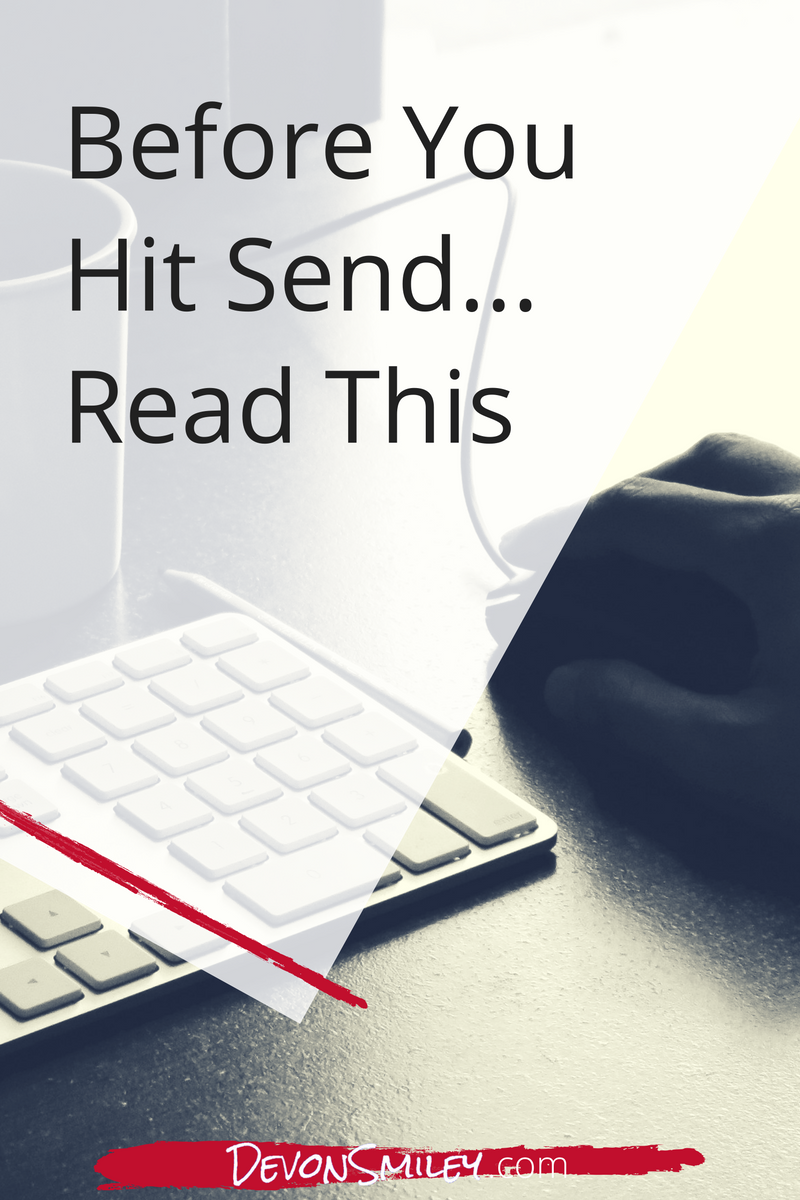Leverage Email for Smooth Communication
As a kid, my summer camp experience of choice was Science Camp at the University of Toronto. I played with light waves, saw what a wind tunnel was all about and even got my hands on some very stinky farting roaches. But the afternoon that stands out the most, even all these many moons later, is the one where we played with ‘electronic messaging’. In a massive computer lab, our group was able to send messages to one another using the computers. Mind. Blown. Today’s teens would get a giggle at the simplicity and awkwardness of it all, but at the time this was some pretty serious technology.
I very sincerely thank the universe for the invention of email and instant messaging several times a week. I can’t even imagine trying to do business without it.
Sending a quick note instead of making a phone call (I’m not a phone fan…) is fabulous, and sending documents zipping along through those invisible wires connecting us all is a serious timesaver. Imagine having to print everything, get it all enveloped up, and sending it through a courier or the post office? Egads. So much time wasted.
Thank goodness for emails.
For all of the use we get out of email in our businesses, and all the benefit it brings, it can’t do everything. Shooting off an email is sometimes going to do more harm than good, especially if you’re negotiating.
A key part of navigating a tough conversation or successfully negotiating with someone is being able to read body language, tone and all the subtle cues as to whether you’re on the right path, or need to abandon the strategy. Email can’t get you those.
Sure, you can let people in on a joke with a little ‘jk’ or winky face…but popping those into your professional emails is iffy. At best.
Getting on the phone or face-to-face for all of your business meetings or negotiations isn’t practical, so email is bound to come into play – so here are my tips for how to use it to your advantage, and not end up with a case of email regret.
DON’T: Have entire conversations or negotiations by email.
If you’ve exchanged more than 3 emails on a specific question or issue, it’s time to pick up the phone and have a real-time talk. Use email to set out the agenda for a meeting, or get specific dates and times locked-in. But take the conversation offline.
DO: Document. Document. Document.
Lots can happen during negotiations in person, over Skype or on the phone. When you wrap, write up your notes on what was agreed and what the next steps are and send that over to the other person with a ‘Let me know if these notes don’t reflect your understanding of our chat today’ sorta note. You’re building a paper trail of agreements and intent, and this can come in handy down the line.
DON’T: Email when angry.
We’ve all had knee-jerk reactions to something we’ve read in an email. And that reply (or reply all) button is riiiight there practically begging us to click it and share a piece of our mind. Resist. Sleep on it, or if you must write something, do it in a Word doc so that there’s no risk of accidentally pressing send.
DO: Remember the Golden Rule.
Email mistakes happen all the time. The wrong people are cc’d, things are forwarded that shouldn’t be, and a file not meant for your eyes may land in your inbox. If someone screws up, try to take it in stride. And if they send you a file by accident and then ask you to please delete it without opening it…do. Honesty is the best policy.
DON’T: Make big asks
It’s tempting to just lob over an email with our big ask (pay raise, contract termination, scope change) because we don’t want to deal with the awkwardness or anxiety that we think comes with having a conversation on the topic. But this can backfire because there’s no way for you to see, or shape the response of the other person. The key to getting what you want is being able to have that conversation and put your persuasiveness to work for you. Use email to lay the groundwork (“Can we have a call tomorrow to discuss the offered salary?”), but make your ask when you can make use of all that contextual goodness.
DO: Create a sweetness folder
This isn’t a negotiation or business best practice per se…but it’s one that I’ve found really helpful. I have a folder in my inbox called Sweetness, and when clients, mastermind friends or newsletter subscribers send me emails sharing how much they love my work, I save them in there. On days when you start wondering why on earth you’re putting in all this effort as an entrepreneur, and wallowing in the fact that nothing seems to be going your way, you can open this baby up and scroll through for an instant mojo boost.
